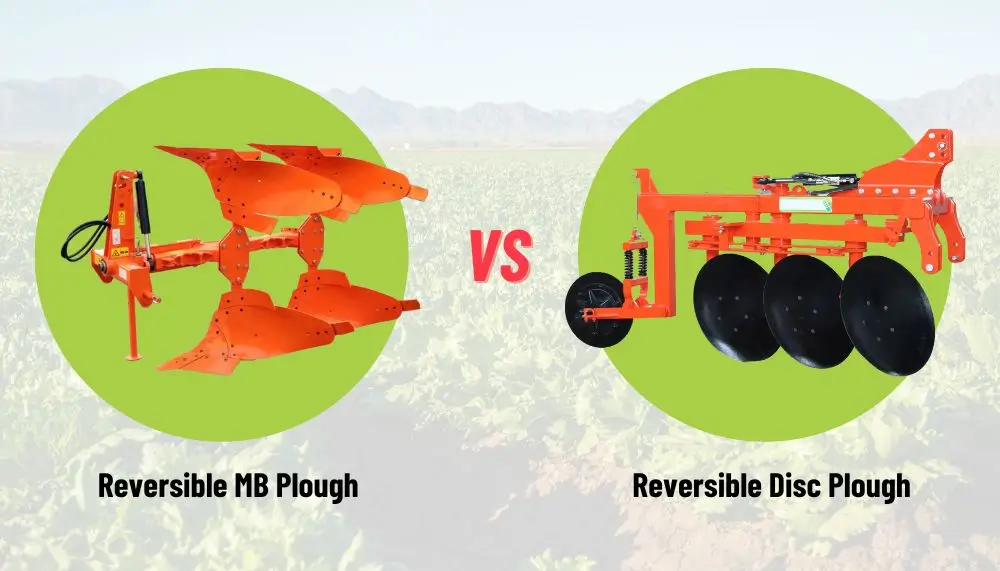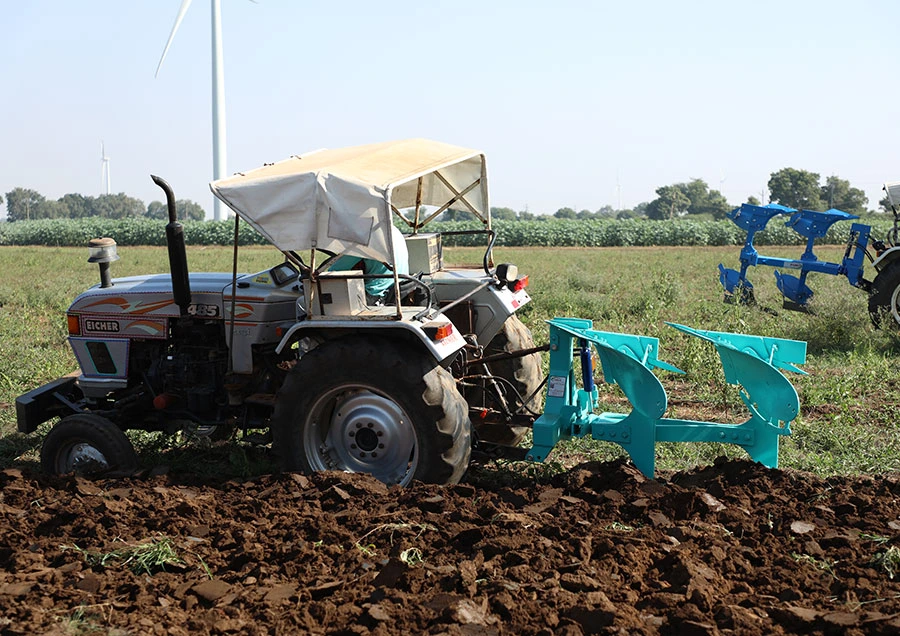Chat With Us
+91 99253 37969Reversible MB Plough Vs Reversible Disc Plough: Understanding the Differences

Using the technological advancements of the 21st century, agricultural processes are becoming more smoother and streamlined nowadays. If you belong to a farmer family or love to know about agriculture, then you must've heard about the implementation of MB Plough and Reversible Disc Plough for tillage activity. Both implements play a pivotal role in simplifying the complex tasks for farmers.
But have you ever wondered about what is the difference between these two Ploughs? Understanding the difference can help you in better implementation and improved results. So, do you know the difference?
If not then don't worry. We have brought you a comprehensive differentiation between MB plough and reversible disc plough.
Reversible MB Plough Vs Reversible Disc Plough
1. Operation:
MB Plough:
MB Plough has a series of leading metal points called the share that penetrates the soil. Thereafter, the mouldboard lifts the breaked soil and causes inversion. Mouldboard is the signature curved part that helps in optimized tillage by providing effective turning, lifting, and pulverizing of the soil.
Disc Plough:
A reversible Disc plough consists of a series of individually mounted metal discs. These concave discs give birth to the unique lateral soil inversion technique that is useful for all kinds of soil. The rapidly rotating disc brakes the topsoil and the reversible action helps to lift the upper layer. Therefore, reversible disc ploughs are considered more effective than an MB Plough.
2. Functions:
Both the ploughs are useful during primary and secondary tillage activity. However, their function can vary according to the field situation and soil type.
MB Plough:
- More effective in loose soil as its major function is to slice the soil.
- Mostly used for secondary tillage activity when the soil is already pulverized once.
- Reversible MB plough can be effectively used for mixing two kinds of soil.
- Having a vertical operation can be used in wet and marshy areas.
Disc Plough:
- Reversible Disc Ploughs are often used for primary tillage activity to break the hard soil.
- Farmers also look for a reversible disc plough for stony areas where they need to finely chop the stone layer to achieve fertile soil.
- Removing weeds and uplifting the humus layer are some of the effective secondary functions of reversible disc plough.
3. Blade Type:
Blade types play a significant role in differentiating between ploughs. Blade types can affect the functionality, effectiveness, and usability of ploughs. Let's have a wide look at it.
MB Plough:
- MB Plough has sharpened metal blades supported by a curved metal frame known as the mouldboard.
- These blades are operated in a to and fro motion for cutting the soil while the mouldboard helps in inversion.
- Their pointed blades are used in furrow slicing and their effectiveness varies according to the blade count ranging between 3 to 14.
Disc Plough:
- A reversible disc plough has a series of disc-shaped metal blades attached to a rotating wheel.
- These blades are reversible in nature and the number of blades varies from 2 to 6 with an appropriate spacing of 20cm between two blades.
- A reversible disc plough penetrates tough soils due to its high-speed rotating blades and is therefore implemented in hardy and trashy soils.
4. Cutting Mechanism:
The cutting mechanism is yet another important point to discuss when we are differentiating two different ploughs.
MB Plough:
- Use a framed mouldboard for cutting the soil.
- The cutting mechanism is based on digging and turning the upper layer of soil.
- Effective in wet and muddy areas.
- Commonly used for secondary tillage activities.
Disc Plough:
- Implementation of rotating concave discs for cutting.
- Disc mounted on a common shaft cuts the soil by slicing and lifting.
- Discs are adjustable for different angles and offer versatility for different kinds of soil.
5. Inversion Technique:
Both of the ploughs work on different working principles and hence have opposite inversion mechanisms in different cases.
MB Plough:
- Invert the soil completely with pointed blades.
- Have a vertical action of motion that provides the thrust for complete penetration.
- Flip the soil layer upside down and is effective in mixing humus in the soil.
Disc Plough:
- Invert the soil partially with the metal disc blades.
- Have an angled horizontal movement for effective cutting of soil. Therefore, it is useful in removing weeds and stones from soil.
- This kind of inversion mechanism is typically beneficial for stony and trashy soils.
6. Affordability:
In the last segment, let's compare the prices of the two Ploughs. Budget can be a significant factor, however, quality and functionality should be the foremost components.
MB Plough:
- It is more affordable than reversible disc plough.
- Requires fewer parts and a simple manufacturing process that reduces the cost.
- Maintenance costs are also low due to a simple structure.
Disc Plough:
- Have a moderately high price tag due to the implementation of complex machinery.
- Maintenance costs can be higher if not maintained properly.
- However, the advanced features and functionality justify its price.
Conclusion
Wrapping it up, we can say both the ploughs have several dissimilarities in terms of manufacturing, operations, functions, and affordability. But the common thing is both are aimed at simplifying the complex tasks of a farmer.
Whenever you are confused about choosing the right one for your field, first understand the nature of the soil and your requirements for an effective selection. Hope you have enjoyed the blog. Stay tuned with us for more exciting insights.





